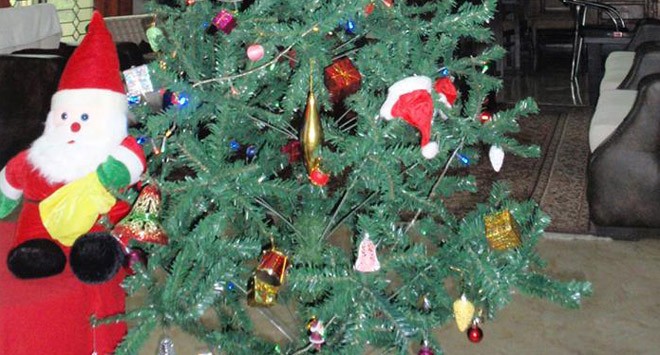

It is that time of the year again when Lahore grows foggy, Christmas trees prop up and we imagine Santa’s dreamy chariot whenever the leaves rustle outside.
We, therefore, went around Lahore finding out where to buy the perfect Christmas tree and how much would be its cost.
The Christmas tree is said to have originated during Renaissance in modern Germany. Many sources credit Martin Luther to first use candles to decorate his Christmas tree when he was inspired by a starry sky. The tree represents various things in different cultures including life, spirit, incarnation and even a cosmic mystery like the birth of Christ.
The tree has become a part of many cultures across the world because of its enchanting beauty and message of universal love. This is precisely why the Sister Shop in the St.Anthony’s Church near Lahore’s Mall road, is thronged by customers. Most people buy these trees for their own homes, but many also intend to gift it to their friends too. "For the last ten years we have stopped selling real trees," says one of the shop’s keeper, during a very busy day.
"The artificial trees look better, are easier to decorate. We have many Muslim customers as well, interested in buying or gifting someone the tree."
The tallest tree the shop has was 7 feet. The prices range between a few hundreds to three thousand.
The retail store Hyperstar also sells Christmas trees and its accessories. A well-decorated 5 ft tall plastic tree can cost about six thousand rupees, and the sales were so high, that they have run out them. A retail website www.tohfay.com is also delivering trees to Karachi, Lahore, Islamabad and other cities. A 7-foot high tree would be a little more expensive here, but can be a wonderful surprise for friends and family, especially if one is sitting abroad and not visiting them for Christmas.
Though the adorned tree makes a great gift, it is also borrowed by one’s relatives or passed on as a gesture of goodwill on other celebrations. But all this travelling takes a toll on its aesthetic appeal and usually by the next Christmas, the people need to buy a new tree.
Ganpat Road, near Urdu bazaar, has almost a dozen stores that sell decoration pieces. Many of them sell Christmas trees in November and December.
"These Christmas trees are artificial and imported from China," says an employee of the Good Luck Barkat Traders, one of the decoration shops on Ganpat Road.
"We have been selling these trees for over ten years. Previously we used to get them from small factories which were expensive and the trees were of poor quality."
The shop has over two thousand trees at the moment, which they ordered from China around September. The smallest tree is worth a hundred rupees and is tiny enough to be placed on one’s table. The largest one is a whooping 14 feet high and costs approx Rs10,000.
The artificial trees are made of Polyvinyl Chloride (PVC), a type of very flexible and durable plastic, which caused a debate around the world. They are said to be environmentally friendly because the material is recyclable, possibly biodegradable and readily reusable.
They also present a good alternative to real Christmas tree plantations. But some activists disagree with it, adding that real trees are cut in rotation whereas artificial trees degrade slowly and cause lead contamination which can cross the toxic level of the tree is re-used for a few years. Other say PVC is completely safe and greener than real trees.
However, some people utilise their living tree, in a pot or garden. They decorate it and later remove those embellishments. This seems to be the most environmentally friendly method so far.
The illuminated tree, filled with Christmas colours and presents, becomes a family attraction, a way to lure loved ones and share sweets, coffee and other treats during December and January. However, a very large, illuminated or well-styled tree can become the focal point of the whole neighbourhood.
"We set up the tree on the first of December," says Sohail Javaid Khokhar, an artist and calligrapher. "These are the days of the homecoming of the Christ, when his birth was expected and predicted by many angels, saints and fortune-tellers. The tree remains there for eight days after the Christmas, not just because that is the New Year’s eve, but because that was when the Christ was circumcised. That day, therefore, marks the start of the Christian calendar, and the shiny Christmas tree celebrates that."